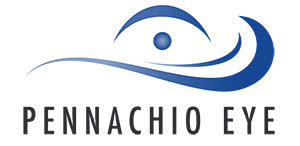
Eye Exam Instruments
 There are many eye exam instruments that Dr. Pennachio in Clermont uses to evaluate the whole vision system and diagnose eye health. Below are just a few of the primary eye exam instruments that are currently in use.
There are many eye exam instruments that Dr. Pennachio in Clermont uses to evaluate the whole vision system and diagnose eye health. Below are just a few of the primary eye exam instruments that are currently in use.
Ophthalmoscope: There are two kinds of ophthalmoscopes: the smaller hand-help monocular direct (MO) and the larger binocular indirect (BIO). The MO is used to examine the back of the eye; that is, the optic nerve, blood vessels, the macula and the fundus- the general term for the back of the eye. The MO allows for a somewhat magnified view with limited viewing field.
The BIO is an instrument which is mounted on the doctor’s head. It has a separate light source and optical system and is used along with a condensing lens placed in front of the eye. This instrument allows for a stereoscopic (3-D) view of the back of the eye. The image is somewhat reduced in size relative to the MO, but the field of view is far wider, allowing the examination of parts of the eye inaccessible with the MO.
The Slit Lamp Biomicroscope: This instrument provides a high magnification view of the front structures of the eye, including the cornea, iris and lens, and with the use of the condensing lens, it allows a detailed, stereoscopic view of the retina. It is used to detect tissue damage to the ocular surface including the cornea (often with the use of yellow fluorescein dye), conjunctiva and lids. It also can detect inflammation of the internal structures, cataract changes of the crystalline lens and more. It is used extensively for the fitting of contact lenses and is the instrument of choice for detecting contact lens related tissue changes to the cornea and surrounding tissues.
Phoropter: This instrument contains lenses and prisms which, in their various combinations, can reproduce virtually any possible optical correction. Dr. Pennachio adjusts the lens powers for optimum patient comfort. The patient is asked questions comparing the quality of the vision afforded by two different lenses. Dr. Pennachio uses this information to fine tune the lens powers and determine the proper prescription for the patient.
The instrument also contains many other useful lenses. Some can be used to present a double image of the chart, allowing instant comparisons of the vision of the two eyes. Others help determine how the eye muscles respond to the various lenses placed in front of the eyes.
These are the primary large instruments used to examine the eyes. Dr. Pennachio also uses a number of other tools in the effort to determine the health and refractive status of each eye and its vision system.
To schedule your complete eye examination, contact Pennachio Eye at 352-227-1999 or pennachioold.wpengine.com today.
